What Are We Looking for Again Pond Decomposers
Bacteria are the principal organisms of decay in aquaculture systems
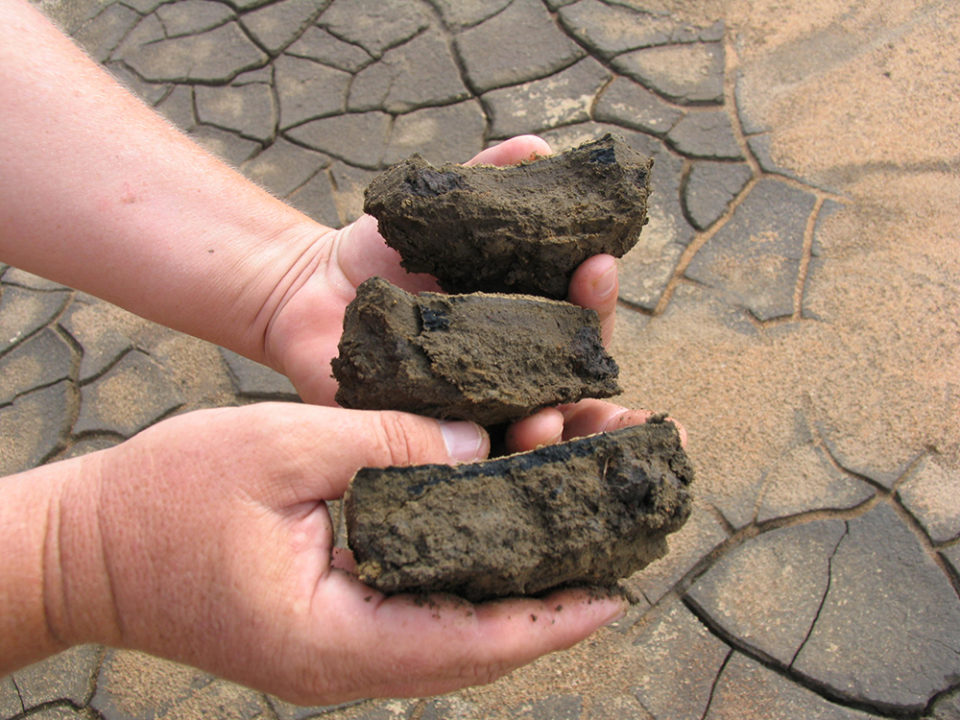
In aquaculture, organic matter is applied to ponds directly in manures (animal dung, grass and agricultural waste product) and feed. It as well is produced through photosynthesis by phytoplankton and other aquatic plants. These plants die and their remains become expressionless organic matter.
Organic thing is the nutrient for many small animals in the h2o and sediment, and organic matter is decomposed by leaner and fungi. A minor portion of the organic matter is transformed into the bodies of the modest animals, leaner and fungi, merely virtually of it is oxidized to inorganic compounds – mainly carbon dioxide and ammonia. Of the organic matter consumed past the culture animals and non expelled as carrion, virtually is oxidized for energy with the release of carbon dioxide, ammonia and other inorganic substances. The remainder makes up the biomass of the culture animals.
Organic affair that enters the h2o is initially particulate and, if large enough, the particles settle to the bottom. Otherwise, they remain suspended in the water as particulate matter. Organic matter, whether it settles or remains suspended, is leached of soluble substances by the water. This results in soluble organic thing in the water column.
The particles are cleaved into smaller particles by mechanical action of water currents until they become small enough to be consumed by the small animals and microorganisms of decay. Leaner grow on the surfaces of particles of organic thing in water and sediment. They also tin release extracellular enzymes that break up particles of organic affair into smaller fragments that they tin can absorb. Leaner and fungi also tin can absorb dissolved organic matter from the water.
Role of bacteria
Leaner are the primary organisms of disuse in aquaculture systems. They are ubiquitous in terrestrial and aquatic habitats as spores, resting cells, or actively growing cells. If fresh organic matter is applied to a habitat initially depression in organic matter concentration and bacterial activity, bacteria will rapidly answer to this substrate (food) and increase in number as they decompose the substrate.
Bacteria reproduce past binary fission in which a jail cell just divides into 2 cells, these two cells carve up again, etc. The time betwixt divisions may be only one or two hours, and cells multiply in an exponential style. They also employ the substrate at an exponentially increasing rate. The hands decomposable fraction of the substrate will diminish in response to microbial decomposition – bold no more than is applied. Microbial growth volition slow, and when the readily decomposable substrate is depleted, the bacterial population will decline to a low level.
Of class, if more substrate is added, the procedure described above volition be repeated. The growth pattern of bacteria in a civilization media is depicted in Fig. 1.
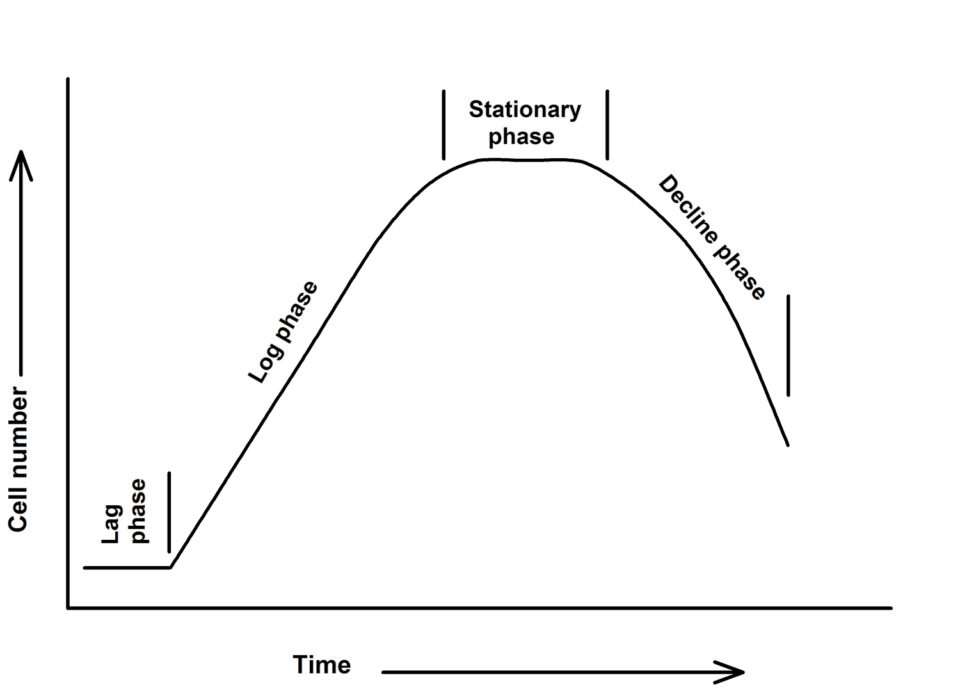
Several factors influence bacteria growth. These are as follows: acceptable moisture; temperature (30 to 35 degrees-C is probably platonic); slightly alkaline atmospheric condition (pH seven.five-8.5 is ordinarily optimum); a supply of molecular oxygen (for aerobic leaner); sufficient, readily decomposable substrate.
Aquaculture ponds usually nowadays an excellent environment for decomposition of organic affair. There is plenty of moisture. Most pond aquaculture is washed in the tropic, subtropic, or temperate zones where water temperature is loftier enough for rapid microbial activeness year around, or at least, during seven to viii months a yr. If ponds are naturally acidic, they are limed to improve pH, and ponds are managed to clinch plenty of dissolved oxygen in the water column and at the sediment-water interface.
Organic affair in pond bottoms
Organic thing added to aquaculture ponds ordinarily is of proficient quality for microbial degradation. Feed is manufactured from high quality institute and animal meals with a low carbon:nitrogen ratio necessary for rapid microbial decomposition.
Dead aquatic found material has a relatively small gristly content, considering water buoys these plants and they practice non demand a lot of cellular material (cellulose, hemi-cellulose, and lignin) for supporting structure. Phytoplankton in particular have a depression carbon:nitrogen ratio. Manure is of much lower quality then feed or expressionless aquatic plants and its carbon:nitrogen ratio is college than for the other forms of organic affair added to ponds.
All the same, manure still has a substantial amount of readily decomposable organic thing. Also, in some ponds, nitrogen fertilizer is applied, and this nitrogen can exist removed from the water past bacteria for facilitate organic matter decomposition.
Organic affair consists of readily decaying carbohydrate, protein and fatty, just it as well has cobweb and other components that are more resistant to decay. Readily decomposable organic matter (the labile fraction) is usually almost completely oxidized past bacteria during the crop period. When ponds are drained, considerable labile organic affair is swept from the bottom in outflowing water.
There is further decomposition of organic affair in lesser soil if ponds are left fallow for ii to three weeks between crops. The remaining organic matter that decomposes more slowly is referred to every bit refractory organic matter. It seldom presents a problem in aquaculture ponds. The fresh, labile organic thing added during the ingather is responsible for most of the oxygen demand and for many of the h2o quality problems in ponds.

Organic matter in pond bottoms tends to increase in concentration during the offset few crops produced in a new pond, but it shortly reaches an equilibrium – usually at a concentration of 2 to 3 percentage organic carbon (nearly four to 6 percent organic affair). This results because the organic thing in the pond lesser reaches a concentration cracking enough that the annual decomposition of balance organic affair in sediment is equal to the annual input to the system. In ponds where sediment is not removed, sediment depth increases causing a gradual increase in the full amount of organic matter in pond bottoms even though the concentration of organic matter remains fairly abiding.
Sediment interacts with swimming h2o quality, but this interaction occurs only in the upper few centimeters. Likewise, dissolved oxygen penetrates only a few millimeters into the sediment, and while the surface layer is aerobic (oxygenated), underneath, the sediment is anaerobic (not oxygenated).
In anaerobic sediment, microbial activity continues, only it consists of fermentation that releases carbon dioxide, alcohols, aldehydes, organic acids and ketones. Fermentation does not completely oxidize organic carbon to carbon dioxide. Even so, there are other bacteria that can use oxygen from nitrate, iron and manganese oxides and hydroxides, sulfate, and carbon dioxide every bit an alternative to molecular oxygen in respiration. These bacteria completely oxidize organic carbon to carbon dioxide (or to methane in the case of organisms that can utilize oxygen from carbon dioxide).
The decomposition rate of labile organic matter occurs at roughly equal rates under aerobic and anaerobic conditions. Refractory organic affair decomposes slower and less completely than does labile organic affair. Toxic metabolites produced under anaerobic conditions usually do not enter the water column if the surface layer of the sediment is aerobic. Moreover, if the pond water has a dissolved oxygen concentration of three-4 mg/L or more, it facilitates the oxidation of ammonia to nitrate by chemoautotrophic nitrifying bacteria. The presence of dissolved oxygen likewise favors oxidation of ferrous iron sulfide and other reduced substances from sediment.

Perspectives
Organic matter decomposition causes well-nigh of the water quality issues in aquaculture ponds past creating an oxygen demand and releasing ammonia, a potentially toxic metabolite, into the water. Efficient organic matter decomposition in aquaculture ponds requires, in particular, an adequate pH (seven.5-viii.5) and enough of dissolved oxygen.
In non-aerated ponds, organic matter inputs should not exceed the corporeality of oxygen available from natural sources. This can be verified by monitoring dissolved oxygen concentration; the concentration should non fall below 3-4 mg/L during the nighttime and especially almost dawn. In ponds with aeration, the aeration charge per unit should be in proportion to the feeding rate. Dissolved oxygen concentration usually can be maintained above iv mg/Fifty by applying virtually 1 hp of aeration for each 10 kg/ha increment in daily feeding rate. Some other rule of thumb for aeration rate is 1 hp aeration for each 300-400 kg/ha increment of standing biomass.
Many fish and shrimp farmers delight in applying living bacterial cultures to ponds. At that place is no logical scientific reason why this practice would be constructive. If leaner are not already oxidizing organic affair and ammonia effectively, it is because natural environmental atmospheric condition, eastward.g., temperature or pH, are not adequate or the organic affair input exceeds the natural capacity or aeration capacity for supplying dissolved oxygen. There also is no experimental show that applying bacterial cultures improves water quality.
Source: https://www.globalseafood.org/advocate/decomposition-organic-matter-impacts-aquaculture-ponds/
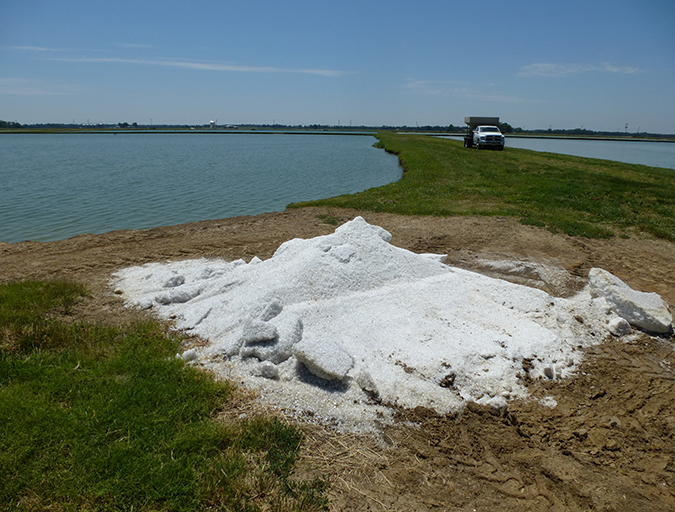
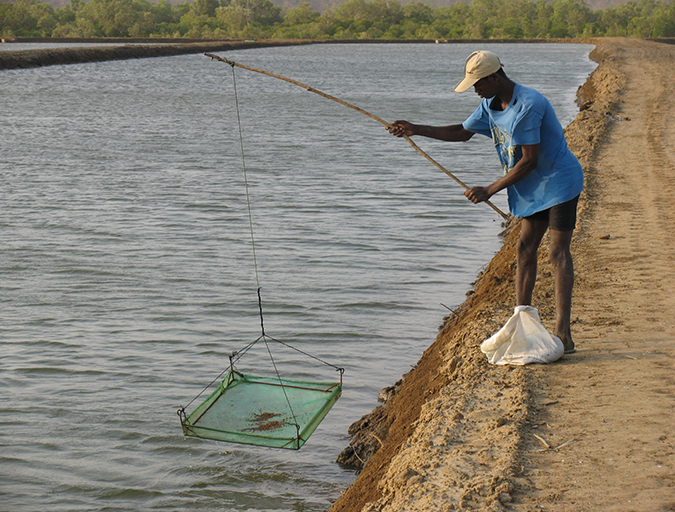
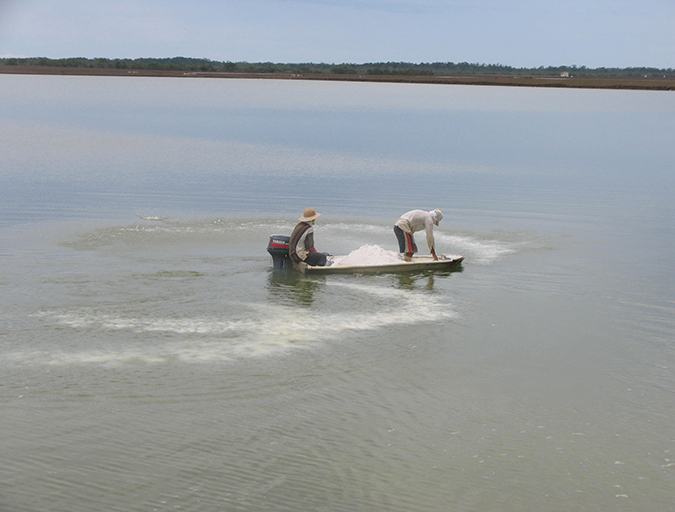
ارسال یک نظر for "What Are We Looking for Again Pond Decomposers"